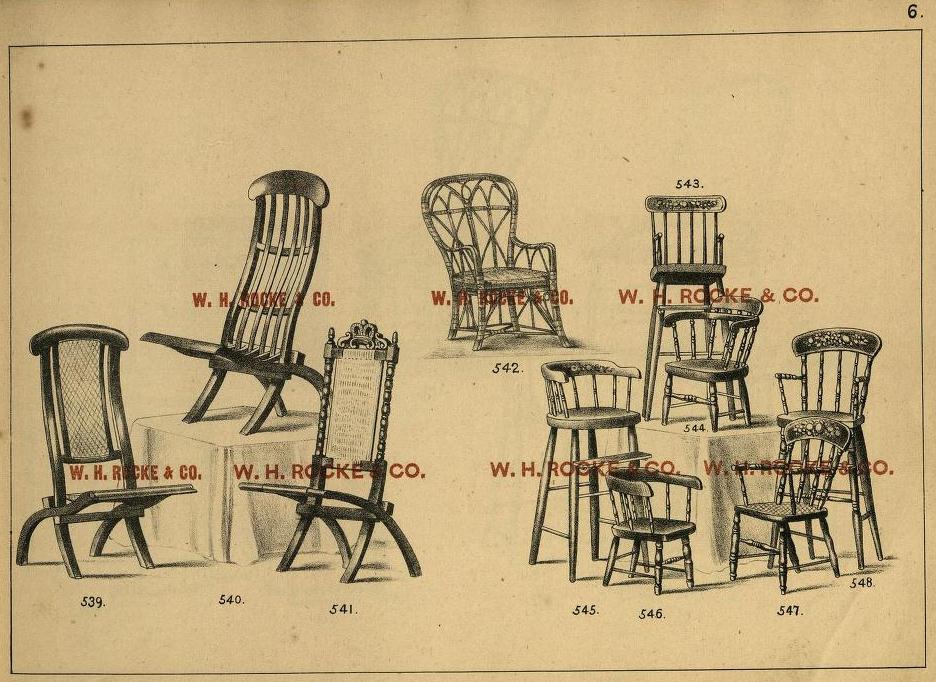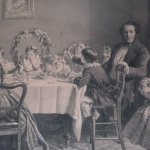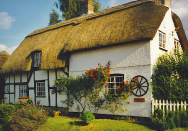Okay I admit it; I may have become a little too obsessed with the perils of Astley Cooper chairs.
The perils of a slouching back
An unfortunate accident with an Astley Cooper chair, adapted from Smee & Sons catalogue, London 1850. Sydney Living Museums, Caroline Simpson Library & Research Collection
Last time, inspired by the drunken revels of a family of sherry-soaked children at their sibling’s birthday, I was looking at children’s high chairs in the collections at Rouse Hill and Vaucluse Houses, and their straight-backed cousin the perilous Astley Cooper ‘posture chair’. Remember the birthday girl, so nonplussed by all the carry-on she doesn’t even notice her brand new doll is being lifted?
The birthday girl from Many Happy Returns of the Day. Engraving after William Powell Frith. Rouse Hill House collection, Sydney Living Museums
Fossicking about in the rare book collection in the Caroline Simpson Library produced a few more chair designs: from the 1850 and 1871 catalogues of London retailer Smee & Sons, and the 1874 catalogue from Melbourne retailer W. H. Rocke & Co.
The 1850 catalogue, from Smee, has several different ‘burgiers’ (arm chairs, or bergeres), with a rod that inserts between the arms to stop a child toppling out (pediatricians agree this is never a good idea). That on top right – with its distinctive curve that starts with the sabre leg and continues across the side – is called a ‘Trafalgar chair’. The notes for an adult’s version in the collection of the V&A gives a concise definition of the style:
This particular style of chair was fashionable after 1808, when the design was first published in the trade catalogue, ‘The London Chair-Makers and Carvers Book of Prices Supplement’. It was described there as the ‘Trafalgar’. The essential feature of a ‘Trafalgar’ chair is the continuous, curving line formed by the sides of the back, the seat rail and the chair legs. It incorporates the fashionable outward curving front leg, used on chairs since 1801 and known as ‘Grecian’. This feature was derived from an ancient Greek chair style [i.e. from the ancient ‘klismos’ chair].
The firm Morgan and Saunders, who had provided furniture for Lord Nelson, renamed their premises ‘Trafalgar House’. They may have given the name to this type of chair, as they made many of the type. [Source: V&A website entry]
‘Childrens burgiers’ [sic] from Smee & Sons catalogue, London 1850. Sydney Living Museums, Caroline Simpson Library & Research Collection
Children’s chairs from Smee & Sons catalogue, London 1850. Sydney Living Museums, Caroline Simpson Library & Research Collection
The 1871 catalogue has three child’s chairs, the first being a combined table and chair as described by Loudon in the previous post, and seen in the nursery at at Vaucluse House:
Designs for chairs including three high chairs from Smee and Sons catalogue 1871. Sydney Living Museums, Caroline Simpson Library & Research Collection
And at Rocke & Co.’s
Title page from Rocke and Co. catalogue, Melbourne, 1874_Caroline Simpson Library and Research Collection, Sydney Living Museums
W.H. Rocke & Co., ‘Upholsterers, carpet and furnishing warehousemen’, were a Melbourne furniture company, then trading from Collins Street. Their 1874 catalogue has several designs for children’s chairs including three high chairs, depicted as if arranged on a cloth covered podium. The company name emblazoned across the designs prevented any other retailer or manufacturer purloining their catalogues.

Various chair designs from Rocke & Co. Melbourne ca1874. Caroline Simpson Library & Research Collection
It’s best not to look at the challenged perspective of the legs too closely – you’ll just give yourself a headache…


